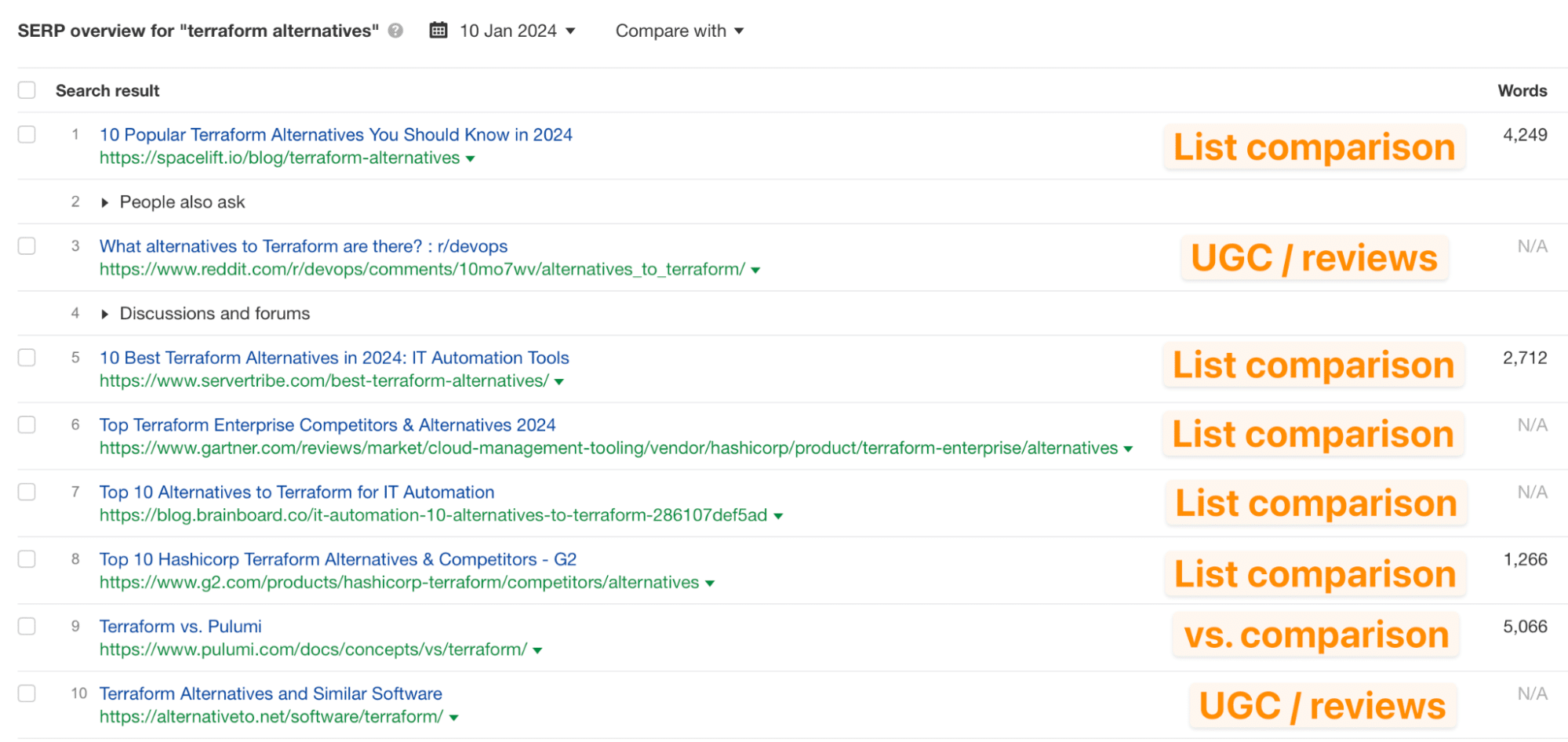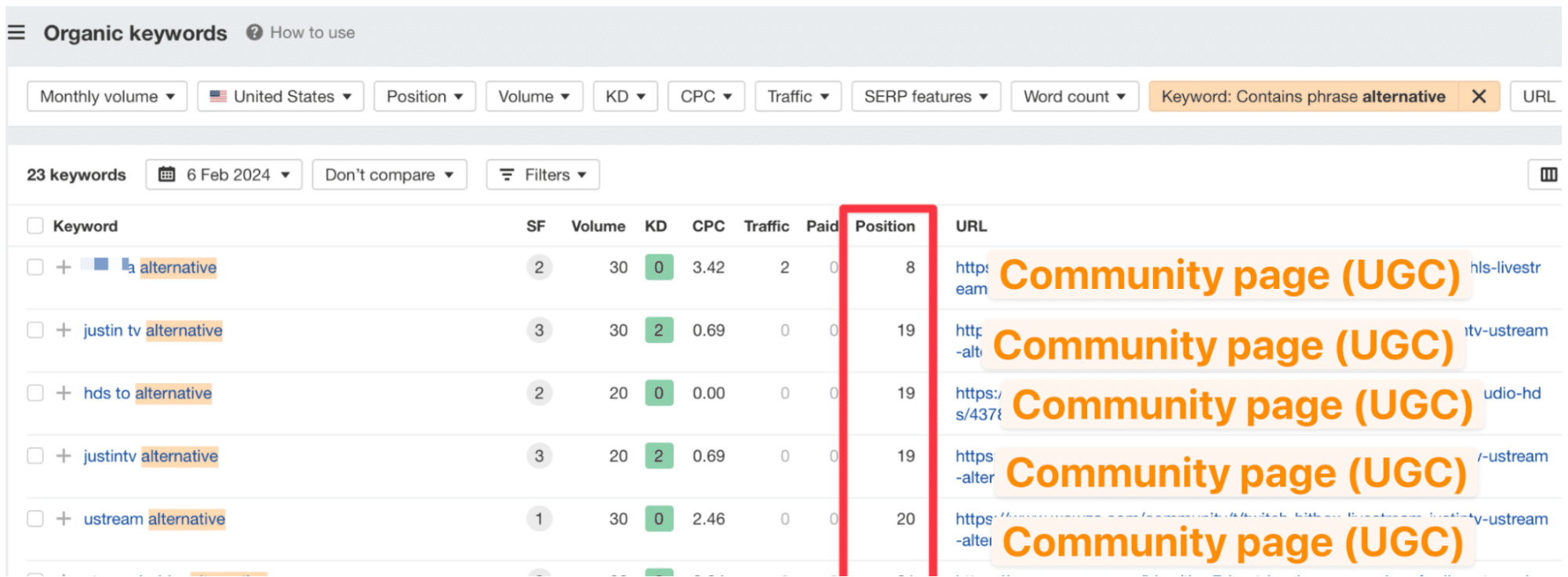“Buying” customers can work.
Just not all that well over the long haul, it turns out.
Direct-response, digital ads (like paid search) are among the best converting channels anywhere.
Like, ever. In the history of time.
No joke. Google it.
It’s the #1 best way to spend money today to generate revenue tomorrow. (Or even over the next ~2-3 months.)
But here’s why this can set you down a dangerous path if you aren’t careful – and actually result in a higher CPL over the long term.
1. Over-relying on paid acquisition for long-term growth
There are a few giant implicit problems for B2B brands with paid media:
- Auction-based networks, like Google Ads, will keep getting more expensive over the long-term.
- While you might be able to improve ad spend optimization over the short-term (A/B testing creatives, graphics, audiences, placements, timing, etc.), you’re unlikely to significantly control or bring down the ROI over the long-term (as CPCs continued to get bid up by your competitors).
- Part of this is because you’re forced to compete head-on, directly, in a red ocean blood bath for a tiny sliver of only ~5% “in-market” prospects at that time (more on this in the next section).
- To top it all off, you’re dealing with the Law of Shitty Clickthrough rates (where the required minimum spend and performance of a channel traditionally falls over the long-term anyway) and it gets more expensive to compete long-term.
- And complex, consultative buying processes with sophisticated buyers don’t just “click and convert” but often require multiple ads in succession or funnels before ever paying you a dime.
Go look at any chart of CPC and CPL costs across not just one year, but over the last 10, and you’ll pretty quickly see a similar trend:
- Paid media (in established categories) increases over the long term.
- Ad creative click-throughs and response rates often fall over the long term.
- Thus, your potential ROI and profit margins decreases over the long term, too.
This ain’t new, either.
B2B CPCs and lower-click through rates have been maligned on this very site since 2007!
That’s not because B2B marketers are dumb. It’s actually the opposite. It’s just that low-priced, transactional sales or impulse buys are easy to generate “click + convert” B2C sales.
So why is this especially troubling today for B2B brands?
Because it forces you to realize that you’ll need to seek out, explore, test, and scale other channels if you want to continue pushing 7-figure revenues into 8-figure ones, then 9 and 10-plus ones as you grow at scale.
To add insult to injury, paid media is also incredibly capital intensive:
- You have to front-load a huge budget, every single month, month after month.
- That’s likely to only continue increasing over the next five years from now.
- In order to hopefully squeeze out revenue over the next few months.
- So that you can hopefully just break-even on each customer within ~6 months.
- In order to make a profit and get “paid back” 6-12 months later (assuming the customer sticks that long, too).
So. If you live in a world where your paid CPL is anywhere near ~$5k/each… you should probably find some better alternatives ASAP if you want a long-term, scalable growth engine.
And not a temporary bandage that works – kinda/sorta – for the next year or two but becomes cost prohibitive 5+ years from now.
In other words:
- Your budget that should be going to other channels so that you can grow the pie next year (hello, SEO!) continues getting cannibalized today and tomorrow and next month by paid ones.
- Just to keep the lights on and numbers moving in the right direction – for now!
- Despite decreasing margins and increasing Cost of Customer Acquisition the rest of next year.
I’m not saying don’t do it if it’s working. You obviously should!
But you also can’t be surprised two years from now when it’s “working less well” and “costing more money” and you should have explored other channels, faster, two years previously (like today!).
Especially when these other channels, like SEO, require you to lay the proper groundwork to actually move the needle 2+ years from yesterday.
This problem only compounds with time, allowing your savvy, well-funded competitors years of moat-building that you’ll need to desperately-and-futility-claw back at a higher premium later on.

2. Relying on heavily-branded, bottom-of-funnel, in-market leads
It’s actually pretty obvious when a B2B brand has “over-relied” on paid media for too long.
It resembles the top-heavy body builder who LOVES arm day, only to wear baggy pants to cover up their weak foundation of embarrassingly-disproportionate chicken legs.
Except in SEO, it’s often upside down.
Here’s what I mean:
Fire up your favorite keyword research tool, plugin your site URL to pull up organic rankings and tell me if any of these red flags sound familiar:
- Your homepage is one of the top trafficked pages on your site.
- Which means you’re overly-reliant on brand aware people, and ignoring the other 95% of out-of-market people who should and could need you months and years from now.
- Your homepage is cannibalizing other non-branded queries for commercial terms (more on this chestnut below).
- Which often means you’re getting little-to-no traffic to the very pages on your site designed to educate and convert customers.
- And little-to-no MOFU or TOFU-related, top-five rankings that help you future-proof your pipeline years from now or bring down ad costs with better targeting across multiple channels.
Or, essentially this:

What’s happening here?
You’re bottom-heavy, where you’re only reaching the tiny subset of potential customers – vs. the wider, broad, bigger, and deeper **** of potential customers who will undoubtedly need you in the future.

Now let’s add this problem to the last one.
Marketing channels don’t actually exist in silos. Unlike the very marketing teams managing them. (How’s that for irony?)
Let’s say your marketing team starts allocating 10% of the paid budget over to SEO as a “proof of concept” to “get the wheels going.”
Good? I guess.
Good enough? Not really.
Because SEO:
- Takes a long time, where the ROI compounds greater over the long haul (12+ months) vs. short-term.
- Unlike paid ads budget (which is a hamster wheel you’ll have to continue growing over the long haul), should require a greater front-loaded investment so that you don’t have to spend as much in years 5+ (as an overall % of your total marketing budget.
Hundreds, if not thousands, of intro calls over the past 15 years tells me this is disappointingly common.
In other words, you spend 10% of the paid budget this year on SEO.
Not really enough to move the needle for next year’s results to roll in and give your team (and bean counters) the certainty that it’ll overtake ads anytime soon (as your primary method to generate customers).
So what happens?
They cut budget in year two and de-prioritize SEO/content/etc.
And you’re back on the paid media hamster wheel in no time.
“Because SEO and content didn’t really work for us.”
Uh-huh.
3. Cannibalization of search intent & content structure mismatch leading to low-to-no profitable rankings
By now you should notice the waterfall effect of these mistakes.
The first problem leads to the second, which now leads to the third.
A self-reinforcing negative spiral if there ever was one.
Like how a stressful job (yours!), leads to shortcutting nutritious eating habits, which leads to lower energy and sedentary behavior, which leads to weight gain, which leads to worse eating habits and an even more sedentary lifestyle and more weight gain next year, and the one after that, and the one after that.
Here’s how this third mistake compounds the first two on your site.
Your product page is ranking for “a lot of keywords.”
Yay?!
Except it’s not actually properly optimized for targeting any of them.
So the chances of ranking top three for any of one of those keywords is slim to none (to impossible).
In other words, your “pretty good” rankings are actually lying to you.
Based on SERP CTR averages, it means you’re unlikely to ever see anything greater than ~5% of the potential traffic. Or, not enough to “move the needle” for the bean counters to give you more budget.
You pull up the organic SERPs to see why you’re not ranking in the top ten yet, and notice that exactly NONE of the following results are product pages – but list comparisons and UGC or reviews of tools:

Think this is a one-off? Just a unique moment in time?
Think again.
Let’s look at this same exact “alternatives”-style query idea, for a completely different brand in a completely-different space, and see what we see:

Ruh roh!
This time, the intent match is slightly better. At least it’s community or UGC pages picking up rankings on this specific website.
But these are obviously not optimized for search. At all.
Because that’s not the primary reason this company has these on their site in the first place.
So they’re almost picking up these “pretty good” rankings by accident. A complete fluke.
A happy accident of sorts? Sure.
However, is this a “winning” strategy to actually rank in the top five for these pages to actually grab ~70-80% of the people searching for these keywords?
And then showing these people a page perfectly positioned to turn profitable prospects into potential purchasers?
Nope. Not anytime soon.
Conclusion
Paid media works well for driving B2B leads.
But that’s also part of the problem.
Because if you only rely on paid media, to the exclusion of everything else, it sets you down a slippery slope of a higher CPL over the long haul.
It consumes the lion’s share of the marketing budget, makes sales people lazy by only expecting credit-card-in-hand leads forever, and makes your executives think they can continue under-investing in everything else across your brand.
And that has a precipitously-disastrous effect if and when you try to kickstart the SEO and content farming process you should have been doing years previously.
All marketing channels get more competitive with time. All marketing channels get more sophisticated with time. And so all marketing channels get more expensive to start with time, too.
SEO and content, however, when done well and unlike most marketing channels, can actually decrease CPL 5-10 years from now.
But only if you actually invest properly today.
Opinions expressed in this article are those of the guest author and not necessarily Search Engine Land. Staff authors are listed here.
Source link : Searchengineland.com
